Can you write a check without a sweat? Well, knowing how to do it is still relevant in today’s world. You will likely use it at some point in your life for something you do, like paying bills and utilities.
If you don’t know how to go about writing checks, you’re in luck as we will show you everything. We’ll cover all the basics, like what information to include on the check and how to sign it.
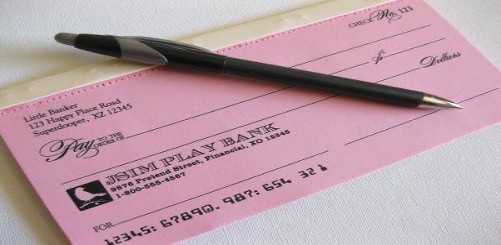
Source: Pinterest.com
So whether you’re just starting and need a refresher course, or you’ve never written a check before in your life, read on for everything you need to know!
What are checks, and how do you get one?
The current generation may not use checks as often as our parents or grandparents did, but it’s still a good idea to know how to write one. A check is a written order for a bank to pay someone a specific amount of money from your account.
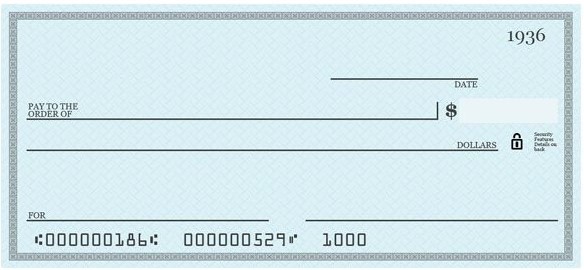
Source: Pinterest.com
You can get checks from your bank or credit union when you open up an account with them. If you need more checks, you can usually order them directly from your bank or credit union’s website.
How to write a check
Now that you know what a check is and where to get one, let’s move on to the next step: writing the check. This may seem like an intimidating task, but in truth, it’s not as complex as it looks. Try the following procedure:
List the Date
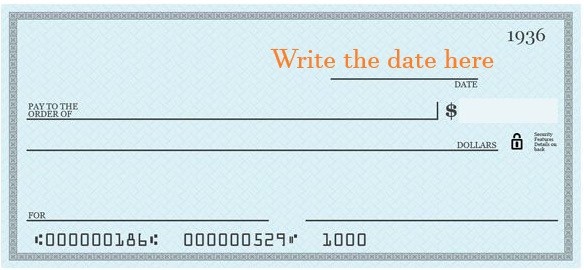
Source: Pinterest.com
Start by writing the date on the top corner of the check. This is important because it will tell your bank when the check should be processed. In most cases, it’s okay to use the current date.
However, you may need to write a post-dated check if you’re paying rent or another bill in advance. This just means that you’ll list a future date on the check, and the recipient will not be able to deposit or cash it until that date arrives.
Include the Payee’s Name
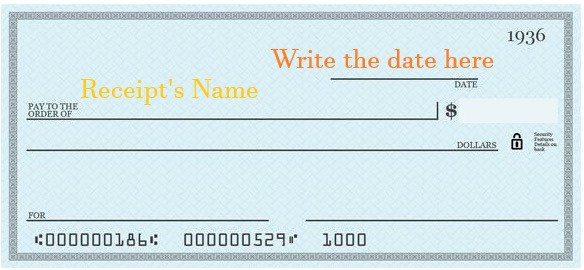
Source: Pinterest.com
This is vital: you need to include the recipient’s name you’re writing the check to in the “Pay to the Order Of” line. This ensures no one else can deposit or cash the check.
If you’re unsure of how to spell someone’s name, it’s prudent to err on the side of caution and use their initials instead.
Write the Amount in Numbers
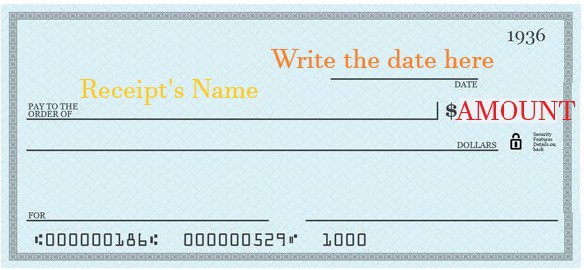
Source: Pinterest.com
On the line below the Pay to the Order Of line (on to the right), you’ll write out the amount of money you’re giving them in numbers. It’s essential to include both dollars and cents here. For example, $100 would be written as 100.00.
Ensure you write inside the box provided to avoid any mistakes. It’s also prudent to use all the space provided, starting your amounts at the edge of the box to avoid theft or manipulation.
Write the Same Figure, But Now in Words
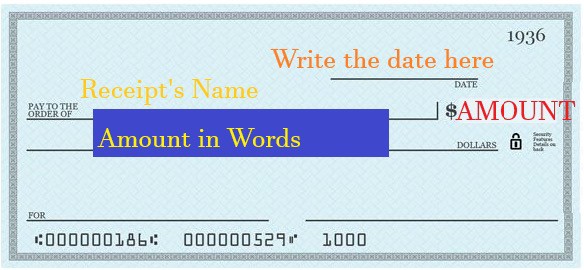
Source: Pinterest.com
On the line below the amount in numbers, you’ll write out the money figure, but this time in words. This prevents anyone from changing the dollar amount after signing the check.
For example, if you’re writing a check for $100, you would write “One Hundred and 00 dollars.”
Again, it’s important to use the entire line provided and start writing from the edge of the box. This will make complicate it for someone to change what you’ve written.
Sign Your Name
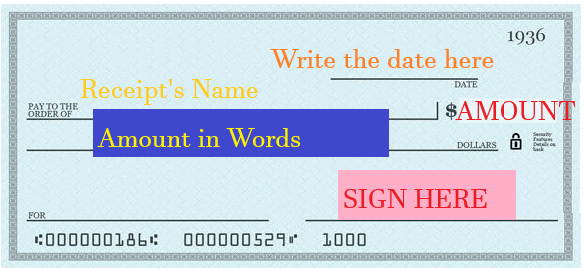
Source: Pinterest.com
Last but not least, you’ll need to sign your name on the bottom right-hand side of the check. This lets your bank know that you’re the one authorizing the payment. After you’ve signed it, the check is good as cashed or deposited!
When you open your account, the sign should match what you wrote in the “Signature” line. If it doesn’t, the bank may not process the check.
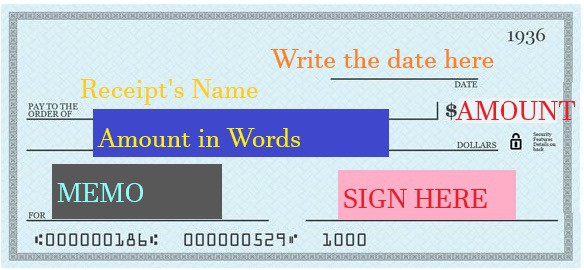
Source: Pinterest.com
Important tips when writing a check
Check fraud has been a menace in the banking industry for a long time now. Both banks and their customers have fallen victim to this crime.
Here are some essential tips you should keep in mind when writing a check:
Use a black or blue pen
This may seem like an obvious one, but it’s worth mentioning. The darker the color, the more complicated it is to alter what you’ve written.
Don’t do it in a public place
If you’re writing a check at the library or another public space, shield the screen from prying eyes. You don’t want anyone seeing your account number or balance!
Secure all your checks in a safe place
This one is crucial. You should always keep your checks safe and secure, such as a checkbook cover or a locked drawer. This prevents unauthorized people from getting hold of them and using them fraudulently.
Never write a check worth more than your account balance
This goes without saying, but it’s still worth mentioning. You should never write a check that exceeds what you have in the account. Otherwise, you’ll be charged with overdraft and lousy check fees.
Avoid blank checks
Anytime you write a check, you should always fill in the amount of money you’re giving. Leaving it blank is courting trouble. Again, start writing the amounts and receipt details first before signing the checks.
Remember, a blank check is a check with no amount or payee information filled in. It’s effectively a blank slate that anyone can fill in and use however they see fit.
Do not postdate checks
Postdating a check is when you write a future date instead of the current one on the check. This is generally done when you want the recipient to hold off cashing the check until later.
However, postdating a check is generally not a wise move. If you need to postpone payment, it’s best to speak to the recipient directly and explain it.
Void incorrect or unused checks
When writing a check, void it and start over if you make a mistake. You can draw a line through the check and write “VOID” in large letters.
This will prevent anyone from trying to alter the check and using it for themselves. Similarly, if you have any unused or old checks, be sure to destroy them so they can’t fall into the wrong hands.
Be sure to date the check
This is important for two reasons. First, it lets the recipient know when they can bank or cash it. Second, it gives you a way to know how much you are spending. Remember to include the month, day, and year in all your checks.
Keep a running total of your checks
This helps you know your current expenditures and avoid writing bad checks. Simply put, a bad check is a check that can’t be cashed because there isn’t enough money in your account to cover it.
Record all the checks in a check register
Do you have a check register? If not, get one. A check register is a small notebook that you can use to record your checks’ details.
It’s a good idea to keep track of this information, as it will help you avoid any fraudulent activity.
Include the following information in your check register:
- The date of the check
- The recipient’s name
- The amount of the check
- A brief of what the check was for
Security tips when writing a check
Money, in whichever form, is very tempting.
While you may think that your checks are well hidden, there’s always the possibility that someone could find them and use them fraudulently.
Below are pointers to keep your checks secure:
Guard your checkbook, jealously
This is a no-brainer; avoid letting your checkbook stay in the open. If you leave your checkbook lying around, there’s a chance that someone could find it and use it. So, keep it in a safe place where only you can get to it.
Don’t write your PIN on your checkbook
Your PIN (personal identification number) is for your eyes only. If you write it on your checkbook, you’re asking for trouble.
If someone finds your checkbook and knows your PIN, they can easily access your account and start using your money. So, keep your PIN in a safe place where only you know it.
Never sign a blank check
Never, we repeat, never sign a blank check. It’s just asking for trouble. If you sign a blank check, the payee can fill in any amount of money, and you’ll be responsible for paying it.
Keep your signature private
Your signature is your autograph. It’s unique to you, and it’s how you identify yourself when you’re writing a check.
So, be sure to keep your signature private. Don’t let anyone else use it, and don’t sign any blank checks.
Use all the spaces provided
When writing a check, be sure to use all the spaces provided. This includes the “pay to the order of” line, the amount box, and the signature line.
If you don’t use all the spaces, someone could easily alter your check and change the payee amount. For instance, if you leave some spaces in the numeric box, someone can add more zeroes and increase the check amount.
Keep your checks at a bare minimum
The lesser checks you write, the lesser the chances of them getting lost or stolen. So, if you can pay for something in cash, do it.
This will also help you know your spending and avoid writing bad checks. Again, writing a check is generally not a good idea in an era of electronic payments.
Void incorrect or unused checks
Unused checks can easily fall into the wrong hands. So, if you have any unused checks, be sure to destroy them.
You can draw a line through the check and write “VOID” in large letters. This will prevent anyone from trying to alter the check and using it for themselves.
Likewise, if mistakes crop up when writing a check, void it and start over.
When do you sign a check?
We can all agree that signing a blank check is a bad idea. However, there are instances when you might have to sign a check before it’s filled out.
For instance, if you’re going on vacation and you want someone else to be able to withdraw money from your account, you’ll need to sign a check in advance.
In this case, be sure to write “For Deposit Only” on the back of the check. This will prevent the payee from altering the check and using it themselves.
If some issues are still unclear about writing a check, ask your bank or financial institution. They’ll be more than willing to help.
But overall, the best time to sign a check is after the payee and amount have been filled in.
When you sign a check, be sure to use your entire signature, not just your initials. A consistent and unique signature is one of the best ways to prevent check fraud.
Is writing a check to oneself legal?
This is a common question whose answer is yes; writing a check to oneself is perfectly legal.
You might do this if you need to deposit money in your account, but you don’t have any cash on hand. Or, you might do it if you want to withdraw cash from your account without going through an ATM.
Whatever the reason, writing a check to yourself is perfectly legal. Just be sure to use your full name and address so that the check can be processed correctly.
What happens when there’s not enough money in my account to cover a check?
If the check lists more money available on the account, the check will bounce.
This means that the payee will not be able to cash the check, and they’ll be left empty-handed. In addition, you’ll likely be charged a fee by your bank for writing a bad check.
So, if you’re not sure whether or not you have enough money in your account to cover a check, it’s best to err on the side of caution and not write it.
Reasons why checks bounce

Source: Pexels.com
Let’s face it. Not every check sails through. A sizable number of checks are returned every year because they bounce.
There can be many reasons why checks bounce; here are some of them;
Not sufficient funds
This usually happens when the account owner tries to write a check for more money than they have available in their checking account. If the money listed on the check is more than what’s in the account, it will bounce.
It can be easy to miscalculate how much money you have in your account, so double-check before writing a check.
For instance, if you have $100 in your checking account and try to write a $150 check, it will likely bounce.
If you have insufficient funds in your account, you’ll need to deposit more money or find another way to pay the person or business you’re trying to write the check for.
Incorrect name or address
Another common reason for a check to bounce is because the payee’s name or address is incorrect.
This is usually because the account owner wrote down the wrong information when filling out the check. So, double-check the payee’s name and address before writing a check.
You can always void the check and start over if you make a mistake.
Unsigned check
If a check is unsigned, it will bounce; there are no two ways. This is because the signature is needed to verify that the account owner authorized the transaction.
So, if you forgot to sign a check, simply sign it and resubmit it.
Incorrect bank routing number
The routing number is a code consisting of 9 numbers used by banks or financial institutions for identification purposes.
If the routing number is incorrect, the check will likely bounce. So, check and double-check the routing number before writing a check.
Expired check
checks have a limited shelf life and will eventually expire. The expiration date is often found on the front side of the check, so check it before writing a check.
If you try to cash an expired check, it will likely bounce.
To avoid this, keep track of the expiration dates of your checks and be sure to write new ones before they expire.
Voided check
If you need to cancel a check for any reason, you can void it. Simply write the word “void” on the check to do this.
Once a check is voided, it can’t be used again. So, if you try to cash a voided check, it will bounce.
Bad check
A bad check has been altered, such as changing the amount or the payee’s name.
If you try to cash a bad check, it will likely bounce.
The best way to avoid this is to be careful when writing a check and double-check the information before submitting it.
Fraudulent check
A fraudulent check has been created to defraud someone. For instance, a fraudster may create a fake check using someone else’s bank account information.
If you try to cash a fraudulent check, it will likely bounce.
To avoid this, be sure to verify the legitimacy of the check before you attempt to cash it.
Incorrect signature
If the signature on a check doesn’t match the one at the bank, it will bounce.
So, if you’re writing a check for someone else, be sure to get their signature before you submit it.
You should also double-check your signature to make sure it matches the one on file.
Conclusion
How to write a check is not as difficult as it may seem. Just double-check the information before submitting it, and you should be good to go. Remember, this is money you are dealing with, and it can be pretty easy to make a mistake.


